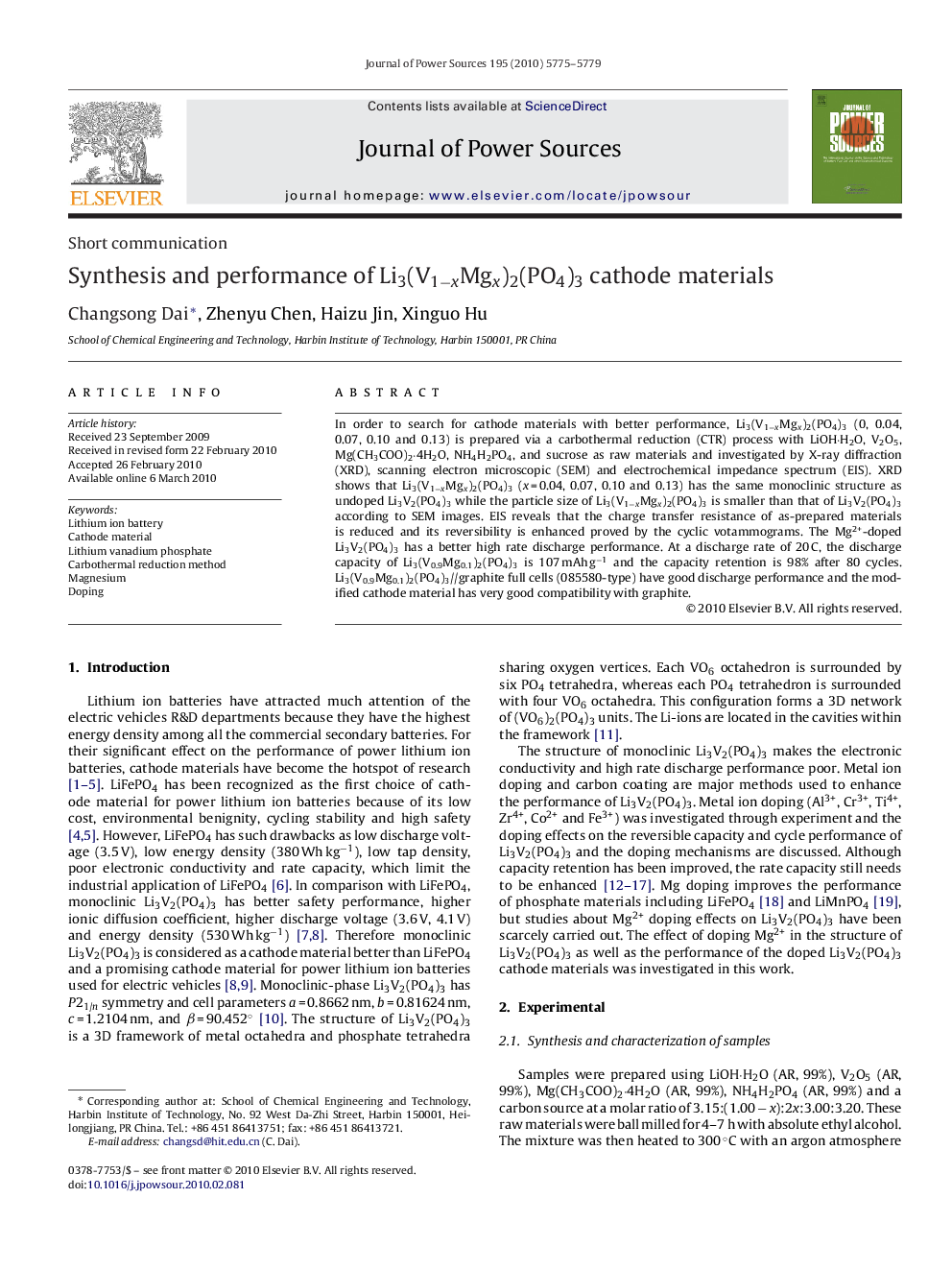| Article ID | Journal | Published Year | Pages | File Type |
|---|---|---|---|---|
| 1293745 | Journal of Power Sources | 2010 | 5 Pages |
In order to search for cathode materials with better performance, Li3(V1−xMgx)2(PO4)3 (0, 0.04, 0.07, 0.10 and 0.13) is prepared via a carbothermal reduction (CTR) process with LiOH·H2O, V2O5, Mg(CH3COO)2·4H2O, NH4H2PO4, and sucrose as raw materials and investigated by X-ray diffraction (XRD), scanning electron microscopic (SEM) and electrochemical impedance spectrum (EIS). XRD shows that Li3(V1−xMgx)2(PO4)3 (x = 0.04, 0.07, 0.10 and 0.13) has the same monoclinic structure as undoped Li3V2(PO4)3 while the particle size of Li3(V1−xMgx)2(PO4)3 is smaller than that of Li3V2(PO4)3 according to SEM images. EIS reveals that the charge transfer resistance of as-prepared materials is reduced and its reversibility is enhanced proved by the cyclic votammograms. The Mg2+-doped Li3V2(PO4)3 has a better high rate discharge performance. At a discharge rate of 20 C, the discharge capacity of Li3(V0.9Mg0.1)2(PO4)3 is 107 mAh g−1 and the capacity retention is 98% after 80 cycles. Li3(V0.9Mg0.1)2(PO4)3//graphite full cells (085580-type) have good discharge performance and the modified cathode material has very good compatibility with graphite.
